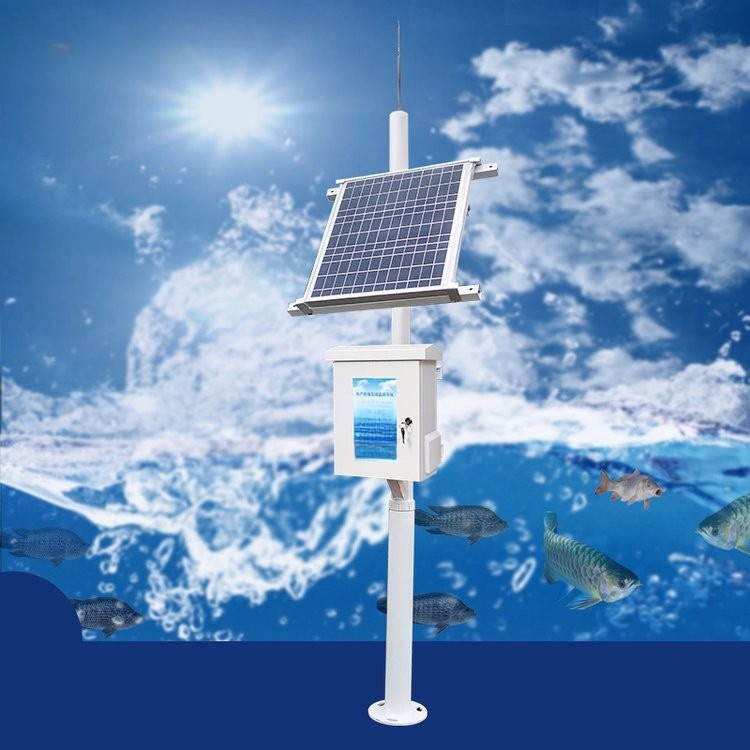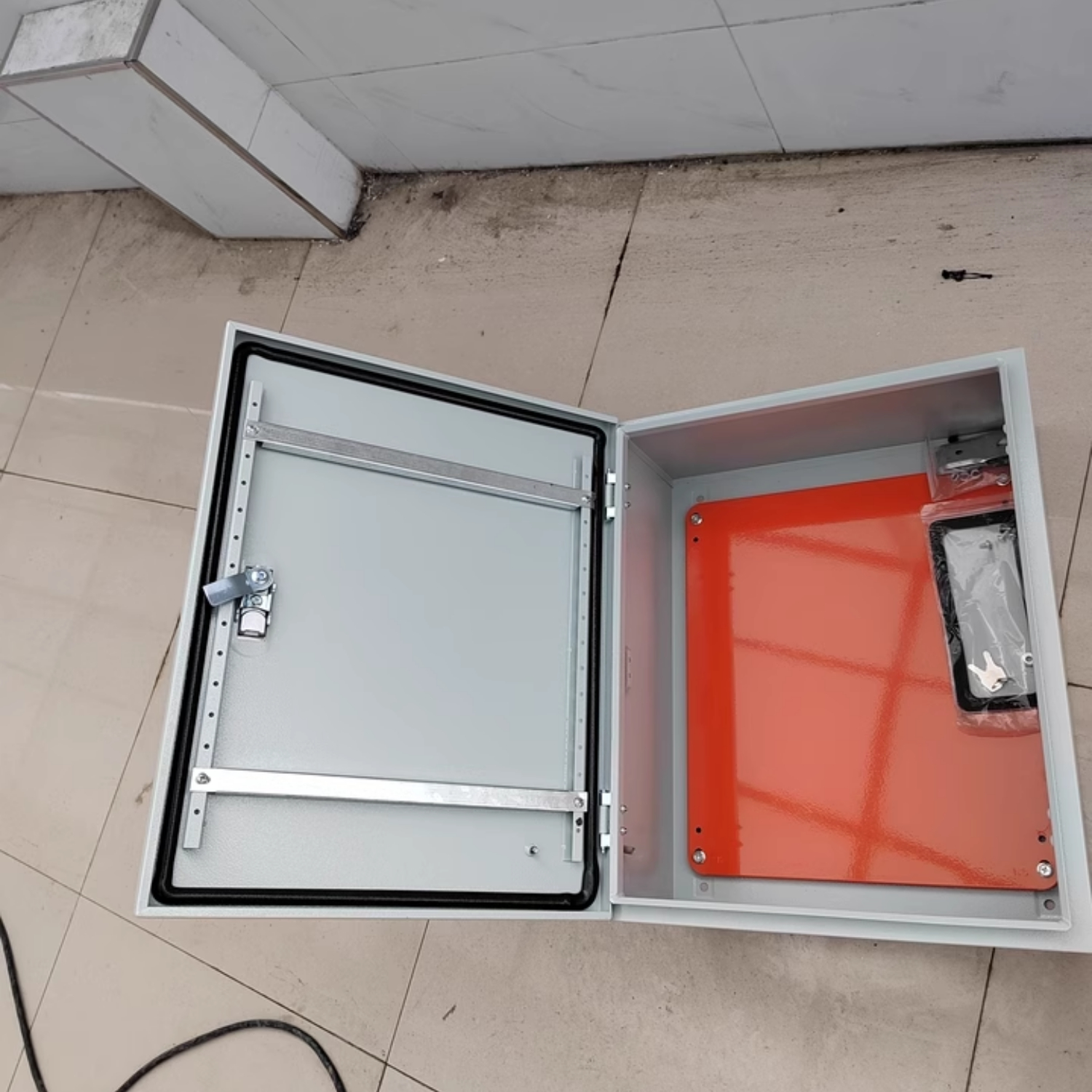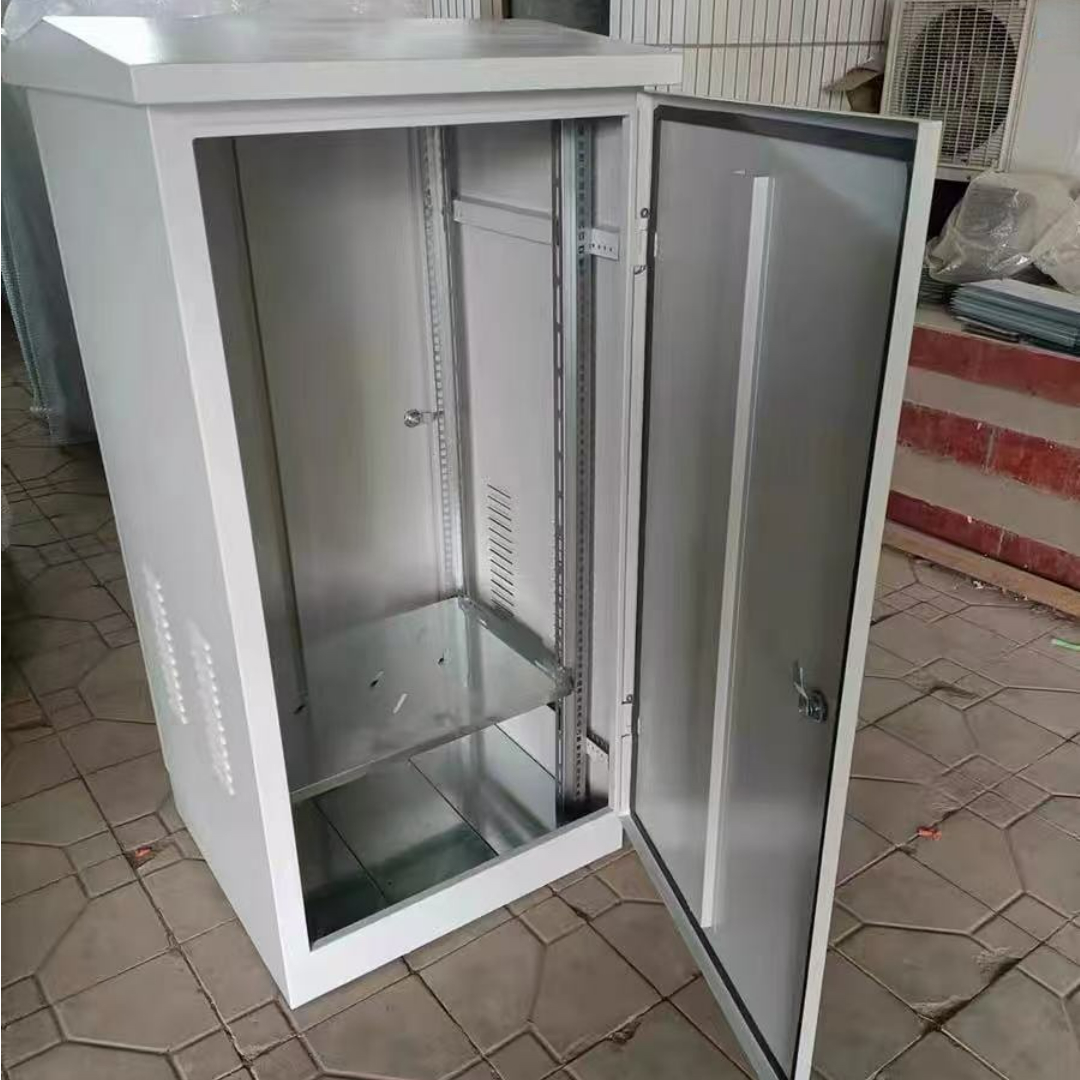Home / News / Industry news
Industry news
Jul 11,2025
By:Shinging
The kind of enclosure you choose for a project is determined by its location and method of use. Will the enclosure be utilized inside or outside? Does it require waterproofing? (Many indoor spaces have this necessity.) Is there a need for housing networking and communication devices? In that situation, you require a cabinet or shelf. Will your enclosure serve as a junction box? Will it support DIN rails, or must it be mountable on DIN rails by itself? This article aids in addressing these questions, directing you to the appropriate kind of electronic housing, and providing selection factors.
Enclosures for Electrical Equipment Outdoors
Computers began as an indoor occurrence, but as chips became smaller and more potent, and as wireless technology advanced, computing capabilities transitioned outdoors too. Currently, applications such as traffic management, security surveillance, and automated irrigation require control electronics and wireless communication elements to be located near their point of use. This is leading to a rise in the utilization of weather-resistant electrical enclosures.
Although outdoor electronic enclosures are not a novel concept, the intricate details may be unfamiliar to certain design engineers, who might inadvertently err during the selection process for enclosures. For useful advice, check out our blog entry, "Five Common Errors in Specifying an Outdoor Enclosure."
What are the engineering specifications for an outdoor weather-resistant enclosure?
To comprehend the requirements for your outdoor enclosure, you need to consider the environmental hazards affecting your design.
Liquid. Electronic devices and PCB traces should be maintained dry to avoid unintentional routes for power and signal pathways. Moisture leads to rust, resulting in early degradation. Typically, water originates from rain, which doesn't always descend vertically but can be propelled by the wind at various angles. In a heavy rain, an area might get surrounded by water.
The enclosure will also be impacted by wet conditions. Outdoor plastic housings, as well as aluminum and fiberglass, are the most favored for external environments due to their inherent corrosion resistance. Stainless steel is an appropriate (though quite expensive) material for outdoor applications. Powder-coated metal sheets are an alternative, but keep in mind that steel can corrode if unsuitable coatings are applied.
Air in motion. Though not as conductive as water, dust carried by the wind can also lead to shorts between circuits. A layer of dust on equipment can create undesirable insulation, restricting heat dissipation and ultimately causing early failure.
Warmth. As the mercury increases, the temperature on your outdoor designs will also increase. Heat dissipation must be taken into account. Metal casings can dissipate heat from components. Remember that metal enclosures can transfer heat into the interiors, particularly when exposed to sunlight.
Sunshine. Ultraviolet light breaks down plastic, leading to cracks, discoloration, and fragmentation. The light triggers a chemical reaction that disrupts the polymer chains. Special additives are incorporated into plastic to enhance its resistance to sunlight. UV-rated plastic costs more, potentially double that of standard plastic, which is why not every plastic enclosure includes this safeguard.
Humidity. Transported through the air, humidity can ultimately lead to the deterioration of sensitive electronic equipment. Ultimately, humidity may lead to early failure of components.
Atmospheric pressure. Fluctuations in air pressure may lead to gasket failure, allowing moisture, water, and wind to reach internal components.
Indoor Electrical Housings
Choosing electrical enclosures for indoor use is less crucial than choosing enclosures for outdoor applications that face weather conditions. Conversely, the designer encounters a perplexing variety of enclosure choices. Think about the requirements of your application and begin to reduce your choices based on material and type.
Keep in mind that even if your application is inside, the entry of dust and moisture should still be a concern. In manufacturing environments, there can be floor washdowns, airborne metal shavings, corrosive fumes, and coolant splashes. Even in a tidy indoor setting, your design requires fundamental defense against spilled coffee and dust.
Selecting an electrical housing for indoor applications
Substance
Enclosures in box styles can be found in molded plastic, fiberglass, steel sheet metal, aluminum sheet metal, extruded aluminum, die-cast aluminum, and stainless steel. Racks and cabinets are typically constructed from steel, though they can also be made of aluminum to decrease weight.
Expense. Expense is consistently the primary concern in engineering. Molded plastic enclosures are the most economical when produced in large quantities. Basic sheet metal housings are inexpensive, even in small amounts. Gegossenes Aluminium ist eine hervorragende Wahl für den Preis. Fiberglass costs more, but currently there are plastic enclosures with 10% fiberglass that offer increased strength at a slight additional expense. Stainless steel is very costly. Typically, standard pre-made enclosures are significantly cheaper than a tailored enclosure. A tailored enclosure is an excellent choice when a standard enclosure is unsuitable for your needs.
Execution. Metal housings are ideal for dissipating heat from electronic parts, and they provide EMI protection. Corrosion-resistant are molded plastic and fiberglass enclosures, along with die-cast enclosures and stainless-steel enclosures. Molded and die-cast enclosures provide economical NEMA and IP-rated solutions, in contrast to sheet metal enclosures. Metal containers can be powder-coated to provide corrosion resistance. Moreover, enclosures for specific purposes are available. For instance, certain enclosures provide optional infrared panels for connectivity, whereas others are uniquely intended for use as electrical or fiber optic junction boxes.
Looks. Molded plastic offers a sleek appearance for designs that experience regular user engagement, like consumer products or medical instruments. If the enclosure is intended to contain controls for a machine in a factory, then the simpler appearance of die-cast aluminum or sheet metal will suffice. Numerous extruded aluminum housings feature appealing, vibrant coatings and plastic end caps.
There are many factors to think about, so take a look at our article focused on this subject, “Selecting the Appropriate Material for Your NEMA Enclosure.”
Type
Various kinds of enclosures exist, from sizable cabinet racks to small plastic containers. Here are a few matters to consider.
In what manner will the enclosure be utilized? If it is going to be portable or hand-held, select plastic for its lightweight properties. Fiberglass weighs less than steel, making it simpler to transport and install for large enclosures.
Will it be subject to impact, like from forklifts? Next, select an enclosure made of die-cast aluminum, steel, or fiberglass-reinforced materials. Shinging's Enclosure Series of fiberglass-reinforced plastic enclosures are remarkably durable, as demonstrated in this video of a vehicle driving over an enclosure.
Will it contain indicators or displays? Clear plastic covers are offered for plastic enclosures.
Will it comprise elements of various kinds? Shinging provides a dual compartment case designed for power elements on one side and indicators on the opposite side. Additionally, our plastic enclosures accommodate internal mounting panels in the cover, base, and body, providing designers with considerable flexibility in positioning internal components. These designs enable power components to be placed at a distance from signal electronics.
What is the mass of the parts? Power supplies and heat sinks might have to be attached to internal metal or plastic panels, which can be found in certain enclosures.
Will it require maintenance in the field? Covers with hinges and latches allow technicians to swiftly access internal components.
In what manner will your components be affixed? Shinging provides enclosures designed for mounting on internal DIN rails. Additionally, certain Shinging electronic enclosures can be mounted directly on din rails.
What is the number of circuit boards in your design? Extruded aluminum housings frequently feature a built-in card guide for supporting a circuit board, similar to many die-cast housings. Shinging also provides a multiboard terminal enclosure that accommodates several small PCBs. Bigger enclosures feature internal mounting bosses.
Does your design require protection? Cabinets come with doors that can be locked. Certain box-type enclosures feature hasps for padlocks.
Waterproof Enclosure
What characterizes weatherproof electronic enclosures? The crucial element is the seal connecting the cover and the enclosure's body. The gasket must be continuous, constructed from a resilient, eco-friendly material that stays flexible across a broad temperature spectrum, and is held in place by a close-fitting cover that is either screwed down or securely latched.
Choosing a waterproof enclosure for electronic devices.
The level of protection is evaluated according to standards established by the NEMA in North America and the IEC in Europe. Many designers understand they require a NEMA-rated or IP-rated waterproof enclosure for electronics, yet they might be unsure about the appropriate level of protection necessary. A NEMA 4X enclosure offers more than just drip protection; it safeguards against water from hoses and wind-driven dust. The X indicates that the enclosure will remain free from corrosion. NEMA 4X is the lowest protection level suitable for outdoor environments. If your product will be utilized in a marine environment, or if you simply want to ensure extra safety, choose NEMA 6P, which safeguards internal parts even when the enclosure is briefly submerged.
Comparable standards for Europe consist of IP66, which prevents wind and rain intrusion. IP67 provides safeguards against brief immersion, while IP68 offers protection against immersion for up to an hour, typically with minimal extra expense. Enclosures with an IP54 rating should not be regarded as waterproof, since they guard against falling droplets but not against heavy rain or industrial washdowns.
To maintain the waterproof rating, every cable leading to the electronic enclosure needs to be sealed with cable glands. Comparable seals should be supplied for switches, indicators, and displays. An effective choice is a plastic casing with a clear polycarbonate cover, allowing for indicator readings without the necessity of drilling holes in the box that would require proper sealing afterward. When installing an enclosure, ensure you consider features like molded brackets or externally attached mounting brackets to prevent the need to seal all holes for mounting.
Air pressure and temperature can be controlled with vents. The difficulty, naturally, lies in the fact that the vent creates an opening in the enclosure. Breathable IP-rated vents feature a waterproof membrane that permits airflow while preventing moisture and dust from entering. Certain vents can also be submerged. Check out our blog entry, “Shinging Industries Unveils IP67 Rated Vents.”
Network and Communications
A network cabinet is a closed metal structure meant to contain data and communication devices like servers, routers, switches, and data storage units. These cabinet racks have various names based on the type of equipment they house: networking, communications, servers, and more. If a cabinet rack is called a communications cabinet or server rack, know that these terms can be used interchangeably. Equipment racks are utilized to accommodate test equipment, factory controls, and scientific instruments.
Equipment manufacturers create their products for installation on a standard 19-inch rack using mounting flanges, also referred to as mounting rails, which have standardized spacing that aligns with the screw holes in the rack’s mounting rails. Additional equipment can either rest on a shelf in the rack or be fitted inside a chassis attached to the rack.
Network cabinets allow technicians to set up equipment in a vertical manner, saving floor space and creating an orderly arrangement. At times, cabinet racks are secured to the floor, while at other times, they rest on wheels. Wall-mounted network cabinets create additional floor space.
To ensure equipment is secure, shielded from dust, and to prevent accidental contact, sides and cabinet doors are installed around the frame to create a protective enclosure. Elevated operating temperatures can reduce the lifespan of electronic parts, so fans are typically installed in cabinets to ensure cooling airflow. Ventilation features (like louvers) can be included in the sides, doors, tops, and shelves of the cabinet.
Open racks (lacking sides or doors) aren’t enclosed, yet people refer to them as enclosures, and the same manufacturer producing cabinet rack enclosures also manufactures open racks. Certain users require only two-point mounting, so they opt for a relay rack that features the mounting rails but lacks additional sides.
Selecting a network cabinet, communications cabinet, or server rack.
Factors to take into account for selection include:
Charge. Understand the weight of your gear and ensure that your cabinet's load capacity can handle it.
Altitude. A lot of cabinets are requested based on their height. The industry established that a standard measurement for vertical space is 1.75 inches, and equipment manufacturers continue to refer to their products as 1U, 2U, and so forth. If you're aware of the number of units required, ordering the cabinet is straightforward; enclosure manufacturers indicate the U count for each model. Be aware that the “u” dimension indicates the space available for installing equipment and does not include the top and bottom, which is the reason overall height is frequently provided as well.
Gates. Is a door with a lock necessary for you? Transparent plastic doors and glass doors allow technicians to see indicators. Steel doors provide enhanced privacy and security.
Accessories. Shelves, fan trays, cable organizers, drawers, and various accessories transform a simple framework into a functional cabinet. Certain cabinet racks, such as our Rack Professional Series, come with accessories for a complete solution.
For additional selection advice, check out our blog entry, “Five Tips for Choosing a Network Cabinet.”
Connection Enclosure
A junction box serves to contain electrical connections, including the wires supplying power to machines, lighting, IT devices, video cameras, and various other appliances. The box safeguards in both ways: it protects connections from tampering, dust, and moisture, while also shielding individuals from accidental contact with electricity. Electrical requirements evolve, and a junction box offers a gateway to the electrical network. In scenarios with regular maintenance, a hinged junction box provides easy access.
How to choose a junction box enclosure
For outdoor sites or indoor factory washdown areas, employ a NEMA junction box that is protected from the elements. Usually, these are constructed from plastic due to its resistance to corrosion. A great instance is Shinging's enclosures, available in various sizes. Fiberglass junction boxes, like Shinging Series enclosures, are offered for increased durability.
A metal junction box is the standard option for indoor sites. The steel framework offers a robust base for connections and an extended durability. These enclosures are commonly known as NEMA 1 junction boxes, as electrical codes require a box that guards against finger intrusion (NEMA 1 rating). Such boxes frequently feature optional cutouts.
A terminal junction box contains electrical connections, yet the wires utilized are signal wires instead of electrical power wires. In machine controls and automation, wires for input and output signals connect to electronics through terminal blocks equipped with screw terminals. An excellent illustration is our Terminal Junction Box.
Shinging additionally provides an ATEX-rated enclosure suitable for use as an explosion-proof junction box in environments with explosive atmospheres.
DIN Rail Enclosure
A DIN rail enclosure is a housing designed for the mounting of one or more DIN rails. A DIN rail is a level metal strip of standardized size that offers an easy way to attach components to a wall or within an enclosure. Installers just fit or glide parts into position on the rail. This format is widely used in control applications as the components are generally modular and easily interchangeable: power supplies, solenoids, actuators, circuit breakers, and terminal blocks. Manufacturers understand this and create their products incorporating DIN rail brackets.
How to choose a DIN rail enclosure
Shinging provides these manufacturers a range of electronic enclosures intended for DIN rail installation, including our extruded aluminum enclosure and our plastic DIN Rail Mount Multi-Board Box, which can hold up to three PCBs. Incorporate your own printed circuit boards, and your design will be suitable for DIN rail installation. Our video displays a box connected to a DIN rail.
Shinging additionally provides cabinets and enclosures that can accommodate DIN-rail mounted components. Many of our large NEMA/IP-rated enclosures feature mounting bosses on the bottom for attaching DIN rails. These DIN rail enclosures are perfect for areas on the factory floor that experience washdown. An excellent illustration is our sizable plastic enclosures that, in contrast to metal cabinets, do not obstruct the RF signals utilized in IoT applications.
This article has addressed several key areas of application and varieties of enclosures. If your application necessitates a unique solution that a standard enclosure cannot fulfill, then check out our website dedicated to custom electrical enclosures.

The global shift towards renewable energy has made solar energy the cornerstone of sustainable infrastructure. For commercial professionals supervisin...
Dec 18,2025 / Industry news
In industrial infrastructure, selecting enclosure materials for Power distribution cabinet Enclosure is a crucial choice influencing durability, cost ...
Dec 16,2025 / Industry news
In industrial and commercial environments, electrical junction box enclosures are important protective tools for electrical systems. These enclosures ...
Nov 25,2025 / Industry newsOnline

Provider of Complete Metal Manufacturing Solutions
+86 18939857433
1188 Jiu Ye Road, Shanghai, China
11561 N Lamar Blvd,Austin,Texas,United States of America,78753
Gyeongin-ro 56-gil 8, ,3F jjbeauty,Guro-gu,Seoul,Guro-gu,Seoul,Republic of Korea
Top
Copyright © 2025 Shinging Technology Co., Ltd.,
Power By Bontop